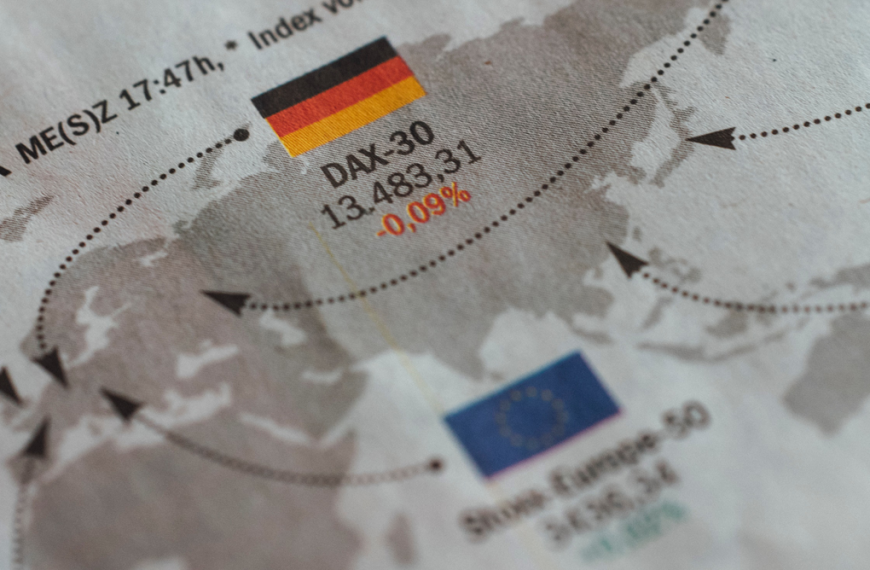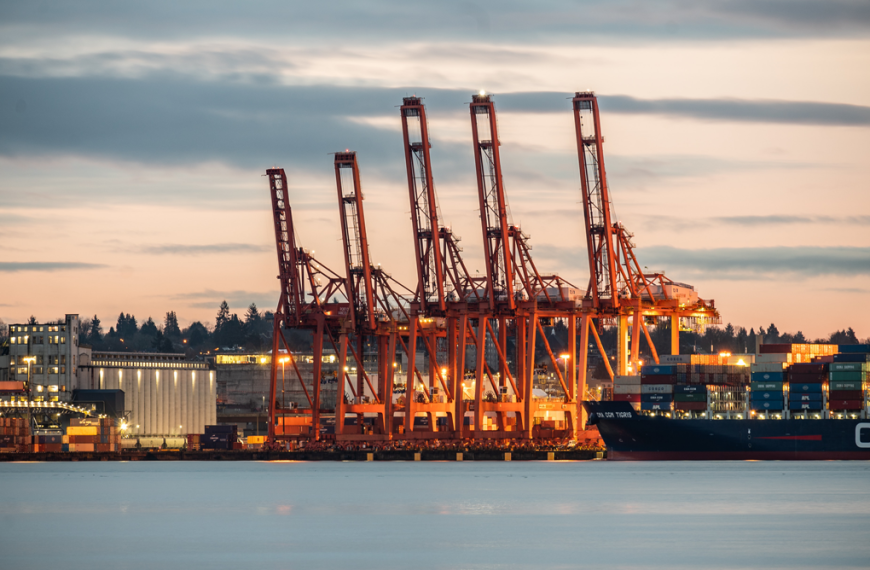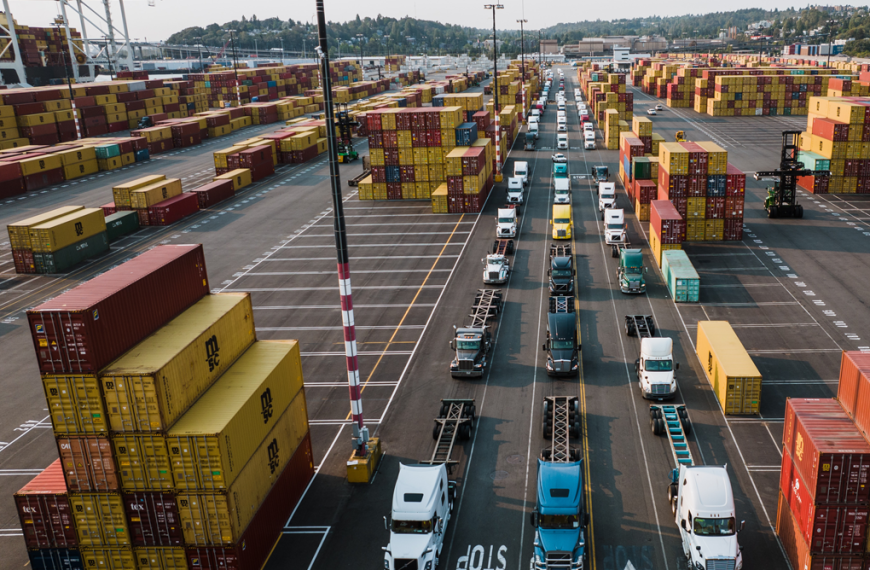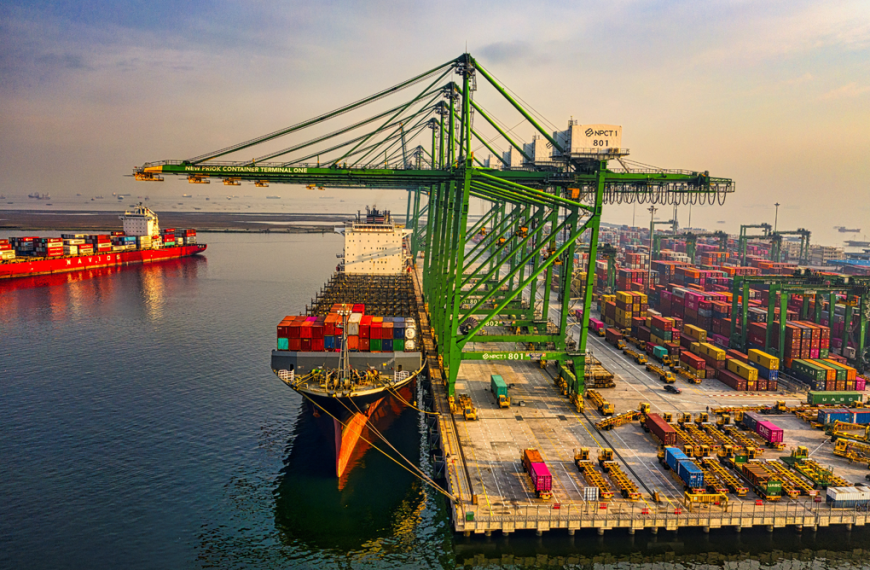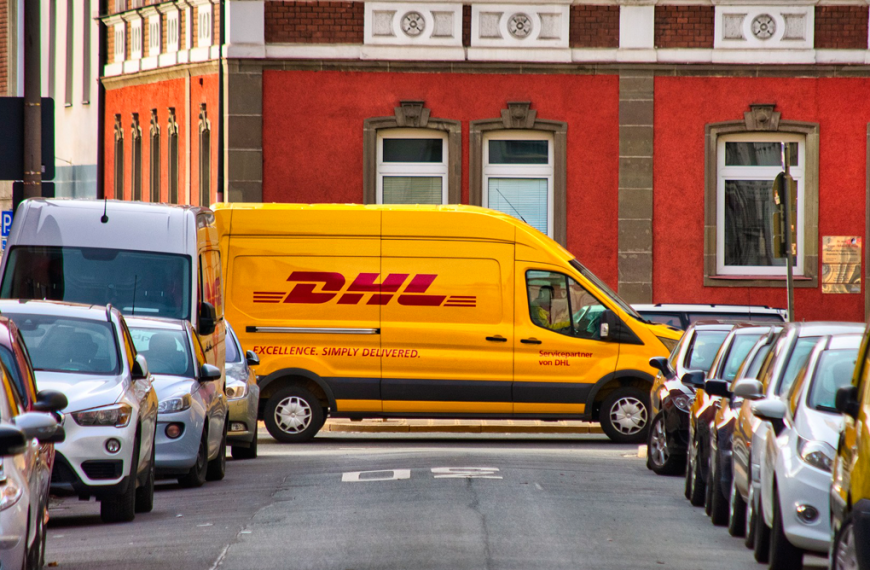Freight Industry Trends: Gain valuable insights and expert predictions for the coming years. Stay ahead in the dynamic world of logistics with our comprehensive analysis and forecasts. From emerging technologies to shifting market dynamics, explore the latest trends shaping the freight industry.
Discover actionable strategies to optimize operations, navigate regulatory changes, and enhance supply chain efficiency. Our in-depth examination equips you with the knowledge and foresight to make informed decisions and capitalize on future opportunities. Stay informed and future-proof your business with our exclusive insights into the evolving landscape of the freight industry.
- Unlocking the Future: Automation and Robotics in the Freight Industry
- Towards a Sustainable Future: Green Initiatives in the Freight Industry
- 1. Embracing Sustainable Freight Industry Trends
- 2. The Importance of Freight Visibility and Tracking
- 3. Drone Freight Delivery: Redefining Last-Mile Logistics
- 4. Overcoming Freight Industry Challenges
- 5. Cold Chain Logistics: Maintaining the Integrity of Perishable Goods
- 6. Advancing Freight Transportation Security
- 7. Collaborative Efforts of Freight Forwarders
- Unleashing the Power of Digitalization and Big Data in the Freight Industry
- 1. Embracing Digital Freight Forwarding
- 2. The Power of Big Data in Freight Handling
- 3. Enhancing Freight Visibility and Tracking
- 4. Mitigating Freight Industry Challenges
- 5. Leveraging Big Data for Last-Mile Delivery
- 6. Maximizing Efficiency in Freight Logistics
- 7. Unveiling New Opportunities in Freight Transportation
- Revolutionizing Last-Mile Delivery: Innovations in the Freight Industry
- 1. Embracing Drone Freight Delivery
- 2. Leveraging Technology for Freight Visibility and Tracking
- 3. Optimizing Logistics for Last-Mile Efficiency
- 4. Enhancing Freight Transportation Security
- 5. Collaboration between Freight Forwarders and Local Partners
- 6. Addressing Environmental Concerns through Sustainable Last-Mile Solutions
- E-commerce and Omnichannel Logistics: Navigating the Future of the Freight Industry
- Frequently Asked Questions (FAQs)
- Related Articles
Unlocking the Future: Automation and Robotics in the Freight Industry
The freight industry is no stranger to innovation, and the emergence of automation and robotics is revolutionizing the way we handle freight transactions, ensuring efficient freight handling, improving freight visibility and tracking, and mitigating freight industry challenges. From drone freight delivery soaring through the skies to the secure digital freight forwarding systems that streamline operations, these advancements are reshaping the world of freight transportation.
1. The Rise of Drone Freight Delivery
One of the most captivating developments in recent years is the utilization of drones for freight delivery. These unmanned aerial vehicles have the potential to navigate challenging terrains, bypass congested roads, and expedite last-mile delivery. Imagine a future where packages are whisked through the air, reaching their destination swiftly and efficiently.
2. Enhancing Freight Visibility and Tracking
The traditional uncertainties surrounding freight visibility and tracking are being addressed by cutting-edge technologies. Real-time tracking systems and IoT devices enable precise monitoring of shipments, empowering freight forwarders and customers alike with accurate and up-to-date information. Say goodbye to uncertainties and hello to enhanced supply chain control.
3. Transforming Freight Handling with Automation
Automation is taking the freight industry by storm, revolutionizing freight handling processes. Automated warehouses equipped with robotic picking systems optimize order fulfillment, reducing errors and improving efficiency. Smart sorting systems ensure swift and accurate sorting, expediting the movement of goods through the supply chain.
4. Securing Freight Transportation
In an era of increasing security concerns, the freight industry is embracing advanced technologies to enhance freight transportation security. From sophisticated scanning systems to biometric authentication, the industry is prioritizing the safety and integrity of cargo during transit, safeguarding against theft, tampering, and unauthorized access.
5. Embracing Digital Freight Forwarding
Digital freight forwarding platforms are reshaping the freight industry landscape. These streamlined systems facilitate seamless collaboration between freight forwarders, shippers, and carriers, simplifying freight logistics, optimizing freight rates, and expediting documentation processes. With a few clicks, you can effortlessly navigate the complex world of international shipping.
6. Overcoming Cold Chain Logistics Challenges
As the demand for temperature-sensitive goods surges, cold chain logistics faces unique challenges. Advanced monitoring systems and temperature-controlled containers ensure that perishable cargo, such as pharmaceuticals and food products, remain fresh and intact throughout the journey, meeting stringent quality standards and regulations.
7. Navigating Freight Industry Challenges
The freight industry encounters a multitude of challenges, from regulatory changes to supply chain disruptions. By embracing automation and robotics, freight forwarders can overcome these hurdles. Streamlined processes, enhanced efficiency, and optimized freight rates enable businesses to stay competitive and adaptable in an ever-evolving market.
To stay ahead in this rapidly transforming industry, it’s crucial to explore the world of freight transportation with an open mind. Embrace the possibilities offered by automation and robotics, and leverage the power of technology to unlock new realms of efficiency and profitability.
Remember, the future is now, and the freight industry is at the forefront of this exciting journey. Join the revolution and embark on a future where the sea freight, air freight, and land freight landscapes are transformed by the relentless pursuit of innovation.
Further reading:
- Drones Take Flight: Revolutionizing the Freight Industry
- The Power of Digital Freight Forwarding
- Cold Chain Logistics: Ensuring Freshness in Every Mile

Towards a Sustainable Future: Green Initiatives in the Freight Industry
As the world grapples with the challenges of climate change and environmental sustainability, the freight industry is stepping up to the plate, embracing innovative green initiatives and transforming the way we approach freight transportation. From reducing carbon footprints to implementing eco-friendly practices, the freight industry is paving the way towards a more sustainable future in the world of freight logistics.
1. Embracing Sustainable Freight Industry Trends
In response to growing environmental concerns, the freight industry is witnessing a shift towards sustainable practices. Companies are increasingly adopting eco-friendly technologies and strategies to minimize their impact on the environment. From optimizing freight transactions to enhancing freight handling processes, sustainability is at the forefront of industry trends.
2. The Importance of Freight Visibility and Tracking
Efficient freight visibility and tracking not only contribute to operational effectiveness but also play a vital role in sustainability efforts. By leveraging advanced tracking systems and digital technologies, freight forwarders can reduce inefficiencies, minimize delays, and optimize routing, thereby reducing fuel consumption and emissions.
3. Drone Freight Delivery: Redefining Last-Mile Logistics
The advent of drone freight delivery has opened up new possibilities for sustainable last-mile logistics. Drones offer a promising alternative to traditional delivery methods, enabling quicker, more direct routes, and reducing reliance on fossil fuel-powered vehicles. This innovative approach to last-mile delivery holds great potential for reducing carbon emissions in densely populated urban areas.
4. Overcoming Freight Industry Challenges
The freight industry faces numerous challenges on the path to sustainability. These challenges include limited visibility into freight transactions, complex freight insurance requirements, and the need to navigate stringent regulations. By embracing digital freight forwarding and leveraging technologies, such as blockchain, freight forwarders can streamline processes, enhance transparency, and overcome these obstacles.
5. Cold Chain Logistics: Maintaining the Integrity of Perishable Goods
Cold chain logistics, crucial for transporting temperature-sensitive goods, poses unique sustainability challenges. By implementing energy-efficient refrigeration systems, optimizing routing and vehicle capacity, and employing sustainable packaging materials, the industry can reduce waste, conserve energy, and ensure the integrity of perishable goods throughout the supply chain.
6. Advancing Freight Transportation Security
Ensuring freight transportation security is not only crucial for safeguarding valuable cargo but also contributes to sustainability efforts. By integrating advanced security measures, such as tamper-evident seals, GPS tracking, and real-time monitoring systems, freight forwarders can enhance security, prevent theft, and minimize losses, promoting a safer and more sustainable industry.
7. Collaborative Efforts of Freight Forwarders
Freight forwarders play a vital role in driving sustainability in the industry. Through collaboration, partnerships, and shared resources, freight forwarders can collectively work towards common sustainability goals. By implementing green practices, optimizing freight rates, and promoting sustainable procurement, forwarders contribute to a greener and more efficient world of freight transportation.
| Sustainable Initiatives | Benefits |
|---|---|
| Optimizing freight rates | Cost savings and reduced environmental impact |
| Investing in green technologies | Energy efficiency and reduced carbon emissions |
| Promoting multimodal transport | Lower congestion and reduced reliance on single modes |
| Implementing sustainable packaging | Waste reduction and enhanced product integrity |
Together, we can shape a sustainable future for the freight industry, where green initiatives and environmentally conscious practices are at the core of freight logistics. By embracing sustainable freight transportation practices, the industry can drive positive change and contribute to a healthier planet.
Learn more about the sustainable initiatives and advancements in the freight industry:
- Eco-Friendly Packaging Solutions
- The Role of Blockchain in Sustainable Freight Logistics
- Sustainable Cold Chain Strategies

Unleashing the Power of Digitalization and Big Data in the Freight Industry
In an era defined by technological advancements, the freight industry is undergoing a transformative shift with the rise of digitalization and big data. These game-changing forces are reshaping freight transactions, revolutionizing freight handling, and propelling the industry towards unprecedented levels of efficiency and optimization. By harnessing the potential of digital freight forwarding and leveraging the insights derived from big data, the world of freight transportation is poised for a digital revolution.
1. Embracing Digital Freight Forwarding
Digital freight forwarding is paving the way for streamlined and efficient operations in the freight industry. By leveraging advanced digital platforms and technologies, freight forwarders can optimize freight transactions, automate documentation processes, and enhance collaboration between shippers, carriers, and other stakeholders. With just a few clicks, the complexities of international shipping can be navigated with ease and precision.
2. The Power of Big Data in Freight Handling
With the advent of big data analytics, the freight industry is empowered with invaluable insights that were once unimaginable. By aggregating and analyzing vast amounts of data, including freight visibility and tracking information, market trends, and customer behavior, freight forwarders can make data-driven decisions to optimize routing, improve operational efficiency, and enhance the overall customer experience.
3. Enhancing Freight Visibility and Tracking
Digitalization and big data have revolutionized freight visibility and tracking. Real-time tracking systems, GPS technology, and IoT devices provide granular insights into the whereabouts of shipments, allowing for proactive management of logistics operations. Freight forwarders can now provide customers with accurate and up-to-date information, ensuring transparency and building trust.
4. Mitigating Freight Industry Challenges
The freight industry faces various challenges, from complex freight insurance requirements to the need for efficient freight rate management. Through digitalization and big data analytics, these challenges can be overcome. Advanced algorithms and predictive analytics enable freight forwarders to optimize freight rates, assess risks, and develop tailored insurance solutions, ensuring smooth and cost-effective freight transactions.
5. Leveraging Big Data for Last-Mile Delivery
Last-mile delivery, a critical aspect of the supply chain, can benefit immensely from big data analytics. By analyzing historical data, customer preferences, and traffic patterns, freight forwarders can optimize delivery routes, enhance fleet management, and minimize delivery times. The result is a more efficient and sustainable last-mile delivery process.
6. Maximizing Efficiency in Freight Logistics
The world of freight logistics is complex, with multiple stakeholders and intricate processes. Digitalization and big data offer transformative solutions to optimize these operations. Automated freight brokerage platforms match shippers with carriers, streamlining the process and minimizing inefficiencies. Advanced warehouse management systems utilize data analytics to optimize inventory, storage, and order fulfillment, enhancing overall logistics efficiency.
7. Unveiling New Opportunities in Freight Transportation
Digitalization and big data open doors to new possibilities in freight transportation. By harnessing the power of digital platforms, freight forwarders can seamlessly integrate different modes of transportation, including sea freight and air freight, to create multimodal solutions that maximize efficiency and minimize costs. These innovative approaches to freight transportation redefine the industry landscape.
| Digitalization Strategies | Benefits |
|---|---|
| Implementing IoT devices | Real-time data, improved tracking, and operational efficiency |
| Utilizing predictive analytics | Informed decision-making, optimized routing, and reduced costs |
| Automated freight brokerage | Efficient matching of shippers and carriers, streamlined processes |
| Optimizing last-mile delivery | Faster delivery, reduced fuel consumption, and enhanced customer satisfaction |
The convergence of digitalization and big data presents boundless opportunities for the freight industry. By embracing digital freight forwarding, unlocking the insights hidden within big data, and capitalizing on technological advancements, freight forwarders can drive efficiency, improve customer experiences, and navigate the future of freight transportation with confidence.
Discover more about the digitalization and big data revolution in the freight industry:
- How Digital Freight Forwarding is Transforming Global Trade
- Unlocking the Power of Big Data Analytics in Freight Management
- The Future of Freight Transportation: Embracing Digital Transformation

Revolutionizing Last-Mile Delivery: Innovations in the Freight Industry
In the ever-evolving landscape of the freight industry, last-mile delivery has emerged as a critical focus area. As customer expectations continue to rise, freight forwarders are embracing innovative solutions to overcome the challenges associated with the final leg of the delivery journey. From leveraging drone freight delivery to optimizing logistics operations, last-mile delivery innovations are shaping the future of freight transportation.
1. Embracing Drone Freight Delivery
One of the most exciting advancements in last-mile delivery is the use of drones. These unmanned aerial vehicles offer swift and efficient delivery capabilities, especially in urban areas with heavy traffic congestion. With the ability to bypass traditional transportation routes, drones enable faster, more direct deliveries, ensuring timely shipments and enhancing customer satisfaction.
2. Leveraging Technology for Freight Visibility and Tracking
Efficient freight visibility and tracking are crucial in optimizing last-mile delivery. By leveraging digital technologies, such as GPS tracking, IoT sensors, and real-time data analytics, freight forwarders can monitor and manage shipments throughout the final stages of the supply chain. This enhanced visibility enables proactive problem-solving and timely delivery updates to customers.
3. Optimizing Logistics for Last-Mile Efficiency
To overcome the challenges associated with last-mile delivery, freight forwarders are turning to innovative logistics optimization strategies. This includes dynamic routing algorithms that consider factors such as traffic conditions, delivery density, and customer preferences. By optimizing the delivery sequence and selecting the most efficient transportation modes, forwarders can reduce delivery times and enhance operational efficiency.
4. Enhancing Freight Transportation Security
Security is a critical aspect of last-mile delivery. Freight forwarders are investing in advanced technologies to ensure the integrity of shipments during this final stage. Tamper-evident packaging, GPS-enabled tracking systems, and secure pickup and drop-off protocols are some of the measures implemented to prevent theft, reduce losses, and ensure the security of goods throughout the delivery process.
5. Collaboration between Freight Forwarders and Local Partners
To navigate the complexities of last-mile delivery, freight forwarders are forging partnerships with local delivery providers and logistics companies. By leveraging their expertise and networks, forwarders can tap into local knowledge, infrastructure, and resources, optimizing the last leg of the delivery process. This collaborative approach enhances efficiency, expands reach, and improves overall service quality.
6. Addressing Environmental Concerns through Sustainable Last-Mile Solutions
Last-mile delivery innovations are not only focused on efficiency but also on sustainability. Freight forwarders are exploring eco-friendly alternatives, such as electric vehicles and bicycle couriers, to reduce carbon emissions associated with the final delivery stage. Additionally, strategic placement of fulfillment centers and smart route planning help minimize the distance traveled, contributing to greener and more sustainable last-mile operations.
| Last-Mile Delivery Innovations | Benefits |
|---|---|
| Drone freight delivery | Faster deliveries, reduced traffic congestion |
| Technology-driven tracking | Real-time visibility, proactive issue resolution |
| Logistics optimization | Reduced delivery times, enhanced operational efficiency |
| Enhanced security measures | Protection against theft, improved shipment integrity |
The freight industry is at the forefront of last-mile delivery innovations. By embracing these advancements, freight forwarders can meet customer expectations, optimize operations, and navigate the challenges posed by the final stretch of the supply chain.
Discover more about last-mile delivery innovations and their impact on the freight industry:
- The Rise of Drone Delivery in Freight Transportation
- Enhancing Last-Mile Efficiency through Technology
- Sustainable Solutions for Last-Mile Delivery
E-commerce and Omnichannel Logistics: Navigating the Future of the Freight Industry
In today’s digital age, e-commerce has transformed the way we shop and the freight industry is at the forefront of this revolution. As online retail continues to thrive, freight forwarders are adapting to meet the evolving demands of e-commerce and omnichannel logistics. From seamless freight transactions to efficient last-mile delivery, the integration of digital freight forwarding and omnichannel strategies is reshaping the world of freight transportation.
1. The Rise of E-commerce and Its Impact
The exponential growth of e-commerce has disrupted traditional retail and sparked a paradigm shift in the freight industry. With more consumers shopping online, freight forwarders are witnessing increased freight handling volumes, complex freight transactions, and the need for efficient last-mile delivery. Understanding and adapting to these trends is crucial for success in the evolving landscape.
2. Seamless Freight Transactions for Online Retailers
E-commerce demands seamless freight transactions, from order placement to final delivery. Freight forwarders are leveraging digital platforms and technologies to streamline the process. Online retailers can now access real-time freight rates, choose the most suitable transportation modes (such as sea freight or air freight), and track shipments at every stage, ensuring a smooth and transparent logistics experience.
3. Optimizing Freight Handling for E-commerce
Freight handling in the e-commerce era requires agility and efficiency. To cope with the increased volume and variety of goods, freight forwarders are implementing advanced warehouse management systems. These systems utilize automation, robotics, and smart inventory management to optimize storage, order fulfillment, and freight visibility and tracking. This enables faster order processing and minimizes errors.
4. Addressing the Unique Challenges of Omnichannel Logistics
Omnichannel logistics is a key strategy for retailers seeking to provide a seamless shopping experience across multiple channels. Freight forwarders play a vital role in managing inventory distribution to fulfill online orders, retail store restocking, and direct-to-consumer shipments. Balancing the demands of multiple channels requires careful coordination, efficient freight transportation, and effective freight logistics management.
5. Last-Mile Delivery: Meeting Customer Expectations
In the e-commerce landscape, last-mile delivery is a critical touchpoint that significantly impacts customer satisfaction. Freight forwarders are adopting innovative approaches, such as utilizing drone freight delivery and partnering with local courier services, to ensure timely and convenient deliveries. Efficient last-mile operations, including freight transportation security and optimized routing, are key to meeting customer expectations.
6. The Role of Digital Freight Forwarding
Digital freight forwarding is the backbone of efficient e-commerce logistics. Through digital platforms, freight forwarders offer a range of services, including freight insurance, freight rate management, and freight visibility and tracking. These technologies enable seamless integration with e-commerce systems, enhancing data accuracy, and enabling end-to-end visibility across the supply chain.
| E-commerce and Omnichannel Logistics Strategies | Benefits |
|---|---|
| Streamlined freight transactions | Real-time rates, transparent logistics, enhanced customer experience |
| Optimized freight handling | Efficient storage, fast order fulfillment, reduced errors |
| Integrated omnichannel logistics | Seamless inventory distribution, improved customer satisfaction |
| Innovative last-mile delivery approaches | Timely and convenient deliveries, enhanced customer experience |
The freight industry is undergoing a significant transformation as e-commerce and omnichannel logistics continue to shape consumer behavior. By embracing digital freight forwarding, optimizing freight handling, and innovating last-mile delivery, freight forwarders can thrive in this new era of retail.
Discover more about the intersection of e-commerce and the freight industry:
- Digital Transformation in E-commerce Logistics
- Optimizing Last-Mile Delivery for E-commerce
- Omnichannel Logistics Strategies for Freight Forwarders
Frequently Asked Questions (FAQs)
What is the growth of the freight industry?
The freight industry has been experiencing significant growth in recent years, driven by factors such as globalization, e-commerce expansion, and increased international trade. The demand for efficient freight transportation and logistics services continues to rise, creating opportunities for industry players.
What are some logistics trends?
Several logistics trends are shaping the industry. These include the adoption of advanced technologies like IoT and automation, the focus on sustainability and green initiatives, the rise of e-commerce and omnichannel logistics, the emphasis on last-mile delivery innovations, and the integration of digital freight forwarding for streamlined operations.
What is the trend in freight spot rates?
Freight spot rates, which reflect the immediate cost of shipping cargo, can fluctuate based on market conditions, supply and demand dynamics, and external factors like fuel prices. It is common for freight spot rates to experience both upward and downward trends in response to changes in the global economy and industry dynamics.
What is the freight prediction for 2023?
While specific freight predictions for 2023 may vary, it is anticipated that the freight industry will continue to evolve and adapt to emerging trends. Key areas of focus may include digitalization, sustainability, supply chain resilience, and advancements in technologies like artificial intelligence and data analytics to drive efficiency and meet changing customer demands.



